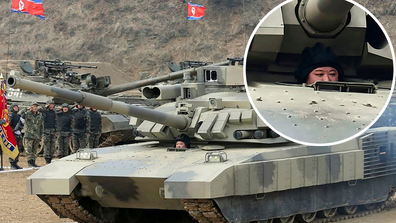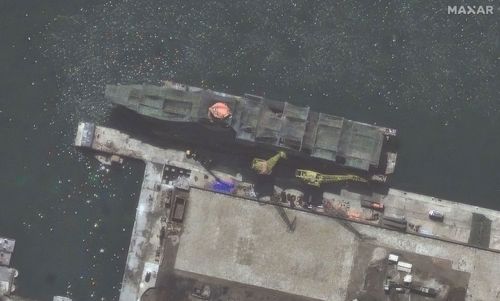On April 6th, independent satellite providers Maxar Technologies and Planet Labs captured images revealing a ship being built at the Nampo shipyard on North Korea’s west coast, approximately 60 kilometers southwest of Pyongyang, the capital city.
The photos indicate the ongoing construction of various weapons and internal systems of the vessel, suggesting it is likely a guided-missile frigate (FFG) intended to carry missiles in vertical launch tubes for targeting both land and sea threats.

The challenge of building warships
Almost any shipbuilder can get the hull and propulsion systems right, said Carl Schuster, a former US Navy captain and Hawaii-based analyst.
Building modern warships involves complex integrations of communication systems, electronics, weapons, as well as sensor technologies, making it a challenging task to accomplish seamlessly.
In an interview with CNN in March, South Korean lawmaker Kim Byung-kee, a member of the National Assembly’s Intelligence Committee, questioned whether Pyongyang has the technical ability to build an advanced warship, or the infrastructure to support it.
“Operating such a big military warship takes significant amount of budget” he said.
“They not only have to build a warship, but make a team that would operate it, and it costs to operate it including the equipment and fuel.

Kim Jong-un drives brand-new tank in drills, calls to ‘prepare for war’
“Also, one huge warship cannot go out on its own. So the question is, can North Korea afford the cost?”
Kim, the retired South Korean admiral, was cautious on not underestimating what the final product may look like, especially its lethality.
“If North Korea equips the new frigate with the hypersonic ballistic missile it claimed to have successfully tested in January, that will cause a game-changing impact in the regional security,” the former naval officer said.
After reviewing the satellite images for CNN, Schuster said it’s likely a year or more of work remains before the new North Korean warship can begin sea trials.
“This ship’s construction is being delayed by the lack of the superstructure, sensor and weapons systems intended for installation,” he said.
North Korea’s navy has about 400 patrol combatants and 70 submarines, according to the most recent estimate from the US Defense Intelligence Agency (DIA) in a 2021 report.
Though that’s a large number of vessels, most of them are old and small.
Joseph Dempsey, an analyst at the International Institute for Strategic Studies, wrote in a January blog post that Pyongyang has only two principal surface combatants. Those Najin-class frigates – 1450-tonne warships dating to the early 1970s – are obsolete, he wrote.
The DIA report said the North Korean navy would largely be reduced to coastal defense in any conflict with South Korea or the United States, both of which have vastly superior naval forces.
But North Korean leader Kim has been pushing to modernise his naval fleet. It is also developing submarine-launched missiles and the subs to carry them.
In September, Kim inspected the site for a new naval port.
“Now that we are soon to possess large surface warships and submarines which cannot be anchored at the existing facilities for mooring warships, the construction of a naval base for running the latest large warships has become a pressing task,” he said at the time.
Yu Yong-won, a South Korean lawmaker, said the ship under construction at the Nampo yard is only one example of Kim trying to modernise his navy.
A nuclear-powered submarine is under construction at a shipyard in the North Korean port of Sinpo and another frigate or destroyer is in the works in Chongjin, Yu said.








